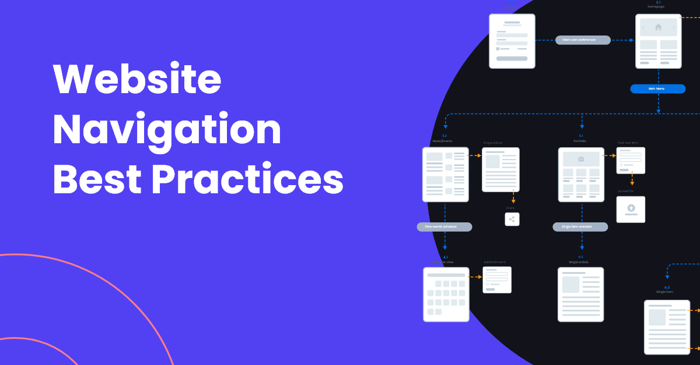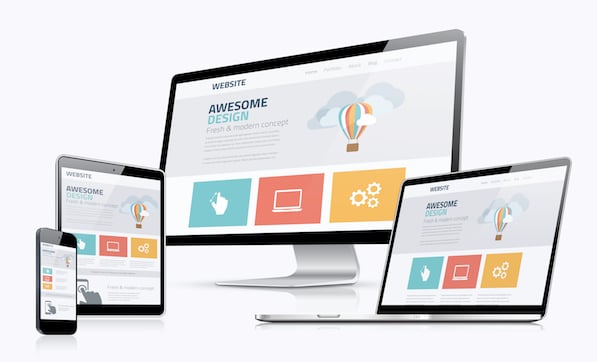Content Marketing Creative Services
Five Sources for Infographic Design - And How to Use Them!
05/08/2019 • 5 min read • Written by Corie Stark
Your content can and should come in many forms to compete in today’s crowded market. One way to present your work in an engaging, visual manner is to design an infographic. Why? Well-designed graphics are easy to digest and offer content in a fun way. But saying you’re going to create one is much easier said than done.
So, how do you get your infographic to stand out? Where do you find a topic and design inspiration?
How to Get Infographic Inspiration
Sometimes an idea for a great infographic comes to you easily; other times you’re stuck wondering what to do. If you’re struggling to land on a topic, here is some inspiration.
Look at Your Existing Content
Chances are you already have a library of content consisting of items like blog posts, press releases, and case studies. You can quickly transform these items into an infographic. And because you’ve already done the research, the creation time of your infographic will be severely reduced. And what’s more, you may be reaching a different sector of your audience because some of your visitors may prefer visuals over text.
Social or Pop Culture Trends
Tapping into what’s going on in the world or news is another excellent source for infographic inspiration. Subjects like music, entertainment, and sports are always trending in some fashion, or another and organizations like Pew Research Center are continually churning out reports that reflect the status quo. In fact, this idea is so popular marketer David Meerman Scott coined the term, “newsjacking” or what happens when businesses piggyback off trending news stories to draw attention to their content.
Look for ones that fit with your brand, so you’re not causing a disconnect with your followers. For example, if you are a digital marketing agency, you could use the growing phenomenon of “influencers” and “influencer marketing” to create a compelling visual. Or if your company specializes in social media, an infographic about the buzz surrounding the arrival of the newest royal baby on Twitter and Facebook could be captivating.
Industry Trends
Most marketers consume a lot of information related to their industry every day, whether it’s through newsletters, articles, or whitepapers. Think about which of these items could be translated into an infographic. For instance, the rise of SMS in inbound marketing is a trend that lends itself to the possibility of an interesting visual.
If you’re not sure where to begin, numerous resources report on various industries, like MarketWatch, TechCrunch, and Brafton. Keeping a vigilant eye to your industry’s trends should lead you to an infographic idea in no time.
Conduct a Survey
If you already have an idea for an infographic and need data to embellish it, try surveying your user base. Polling your customers or leads may also reveal some concepts you hadn’t considered yet.
Use Your Relationships
Coming up with great content ideas doesn’t have to rest solely on the shoulders of the marketing team. Your company is made up of people who are likely brimming with ideas – even though they may not realize it! Ask your coworkers in different positions and teams what they’d like to see, what challenges they recently solved for a customer, or what ideas they’ve been sitting on.
Likewise, you can leverage the relationships you may have with other like-minded brands through co-marketing. Through this type of relationship, you can share resources to create an infographic, and reach similar audiences.
Design Trends to Consider
Graphic designers, like ours at LyntonWeb, do a great job of keeping up with design trends to ensure all of their work is impactful. In 2019, trends seem to be shifting away from the typical styles of the last several years. Here is what our design team has noted, and you might contemplate using:
- More use of dimensions, and less flat design
- Color gradients and shows
- Less boxy styles and more use of shapes and illustrations
For real-life examples, resources like Crayon.co, Awwwards.com, Lapa Ninja, and Dribble showcase current trends.
Best Practices for Designing Your Infographic
Once you have an idea that you’ve solidified with your team and determined what type of design style you like best, it’s time to get started. At LyntonWeb, we go through typical stages you may find for any infographic or design piece: copywriting, revisions, design, and more revisions. We’ll go through the necessary amount of changes until we feel our infographic has told a story because after all, that is the purpose of any great piece of content.
To do just that, our design team adheres to some best practices, such as:
- The KISS principle, or “Keep it simple, silly.” Trying to add to many different design elements or too much copy, can distract from the infographic’s message. Infographics should be easy to digest and doing multiple complicated things will defeat this.
- Keep it focused. Adhere to your one topic and try not to bring in information or visuals that don’t relate to it.
- Limit your use of fonts and colors. When it comes to design, the phrase “the more, the merrier” isn’t as accurate. With the overuse of fonts and colors, your elements can begin to clash and turn people away.
- Make it a manageable length and size. Ultimately, the length of your infographic is determined by what it takes to tell your story. However, when it comes to width, try to keep it within 650 – 800 pixels. If it’s too wide, it will be too hard to read and take up too much room on your webpage.
- Utilize whitespace. Whitespace helps create a right balance of the visual elements of your infographic and can guide your viewers.
- Be visual. This may seem like a given, but sometimes infographics can focus too heavily on statistics and copy. Just like with whitespace, utilizing the right number of visuals versus text can help balance your entire graphic.
- Create a good flow. We’ve harped on this already, but your infographic needs to tell a story; thus, it should have a good flow. You should start with a killer headline, then a good lead-in, followed by your copy and visuals, and end with a call-to-action. A hierarchy like this can help drive your entire process.
- Make it easy to view. If you want people to see your work, make sure it’s ungated and posted to your blog. Sending in an email campaign is another excellent way to get in front of your audience. And if your work is captivating enough, your viewers will hopefully share it with others.
Putting It All Together
With a good topic in hand and best practices in mind, your design team should be able to create aesthetic and useful infographics in no time. But, not all companies are lucky enough to have a team of designers – let alone one. However, if you or someone else in your organization has a good eye for design, you can create your infographic through great resources like Canva, PiktoChart, Venngage, or HubSpot’s template pack.
If you want an example of an infographic created with our guidelines in mind, check out ours on “Getting to Know HubDb.” If your team lacks the necessary design team, don’t worry. We can help with that or any part of your marketing strategy. Contact us today.
By: Corie Stark
After spending many years as a sports journalist, Corie switched to marketing in 2013. Her love of writing, talking to people, and keeping up with the industry enables her to use her skills for anything from social media to long-form blogging. Outside of work, she enjoys hiking with her dogs and making her cats chase the ever elusive red dot.
You May Also Like

Inbound Marketing
Lynton Implementation Packages: Flexibility and Expertise at Your Fingertips
Learn about our agency implementation packages — designed to boost your marketing efforts with tailored strategy, content, de...
Keep Reading
Web Design & Development
6 Website Navigation Best Practices
When designing or redesigning a website, making the navigation easy is important. Here are a few pointers from our design tea...
Keep Reading
Web Design & Development
Eight Design Trends for Your Inbound Website
Considering a website redesign? Check out these eight modern website design trends to create a beautifully designed website.
Keep ReadingSubscribe Today

